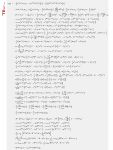- TRSET
What is the longest physics equation? What is the longest equation ever?
What is the hardest equation in physics? How does 3X 1 work? What is the answer to x3 y3 z3
What is the longest theorem? What is the smartest equation?
+ index service
+ TR Search Engine Technology

The model Lagrangian is a mathematical expression that summarizes the Standard Model of particle physics, which is the most successful theory of the fundamental interactions between elementary particles. It is composed of four different parts, each describing a different aspect of the Standard Model.
The model Lagrangian is written in a compact notation that uses symbols and operators from quantum field theory, such as covariant derivatives, field strength tensors, Dirac matrices, and gauge group generators. It also uses various constants and parameters that are determined by experiments, such as coupling constants, masses, and mixing angles.
It is one of the longest equations in physics because it contains many terms and factors that account for all the possible interactions and symmetries of the Standard Model.
It was transcribed by Thomas Gutierrez who derived it from Martinus Veltman's Diagrammatica: The Path to Feynman Diagrams.












 Bu Sayfayı Paylaş
Bu Sayfayı Paylaş WhatsApp CH
WhatsApp CH Twitter
Twitter YouTube
YouTube Linked in
Linked in Instagram
Instagram Facebook
Facebook Türkçe
Türkçe Deutsch
Deutsch English
English